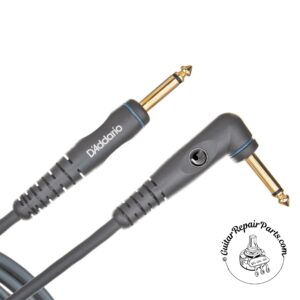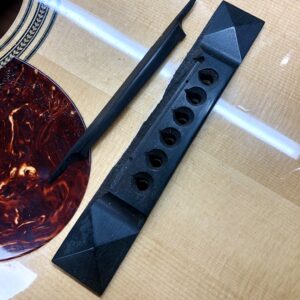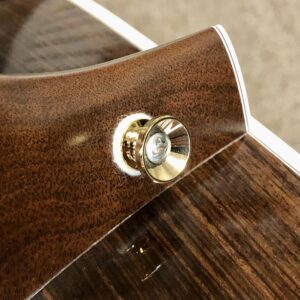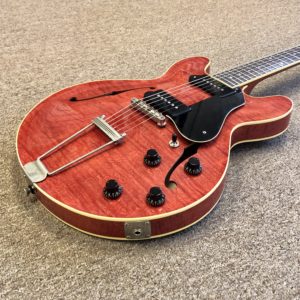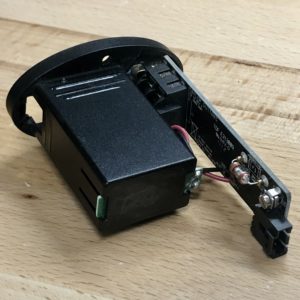Sunken Jack Syndrome
Fixing An Output Jack That Has Fallen Inside Of A Hollow Body Guitar
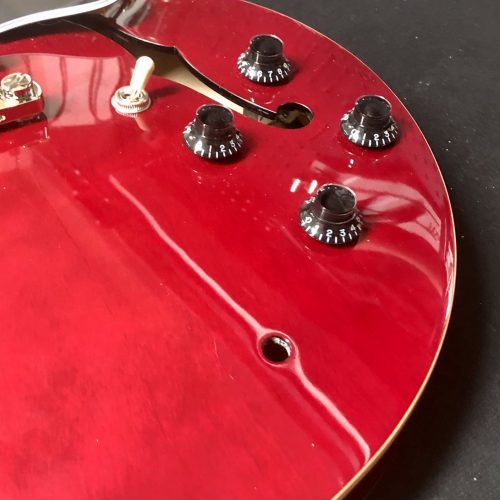
This Epiphone 335 model guitar came into shop with the output jack stuck inside of the body. The nut and washer that had once secured the jack to the top of the instrument had come loose, allowing the jack to drop inside. In shop, we call this “sunken jack syndrome”; This happens fairly frequently on hollow-body and semi-hollow guitars such as the venerable 335 model produced by both Gibson and Epiphone, as well as other similarly styled models including many of those made by Gretsch Guitars. There are some common causes of this problem that should be addressed to limit the possibility of recurrence.
While tightening a loose nut and washer may appear to be a simple task, it is made trickier by the fact that these instruments do not have an access panel for the control cavity; As such, many electronic repairs on hollow bodied instruments require pulling the wiring harness. For this repair, fortunately, the wiring harness remains in place. Still, all work must be carefully performed through the small opening next to the controls called an “F hole”.
Helpful Tips To Avoid Output Jack Issues
Minimize Unnecessary Stress On The Jack
- Unplug the instrument when it is not in use
- Use a right-angled cable when playing guitars with top or side mounted output jacks
- Always Pass your cable underneath the guitar strap before plugging in
- Avoid breaking the attached wires; only tighten a loose jack using a tool designed for the task
Hollow-body / Semi-hollow Output Jack Replacement
While we strongly recommend that players follow the best practices outlined above, sometimes the shortcomings of the installed hardware resist its owners best efforts. What follows is an outline of a repair / upgrade that will minimize the chances of sunken jack syndrome flaring up in the future.
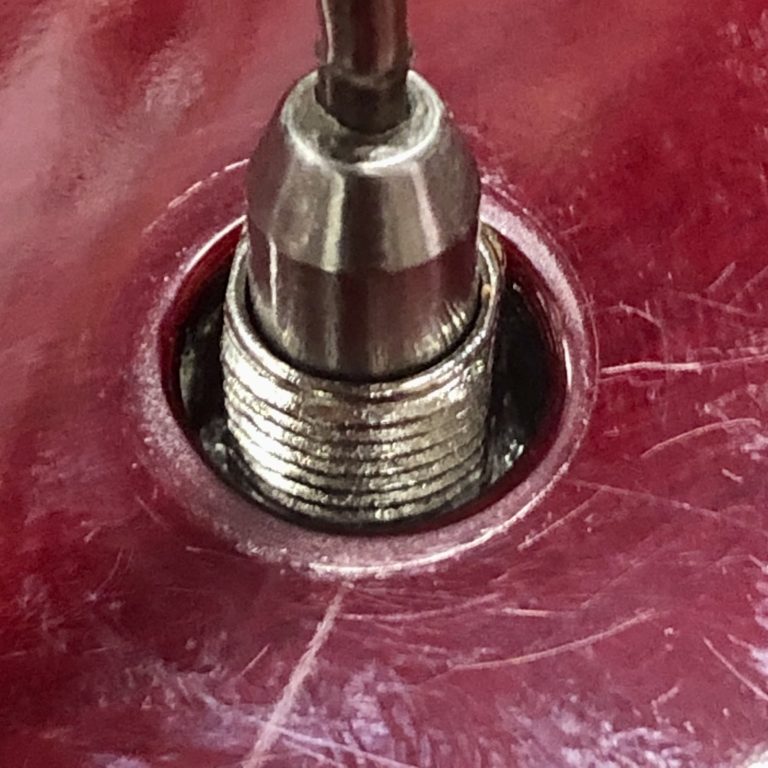
Foreign made instruments like this Epiphone typically have an M9 threaded metric output jack. In this case, the mounting hole was drilled considerably larger than the size of the installed jack.
While it is important to have some space available to to accommodate humidity fluctuations, this is a really poor fit. Too large of a hole allows the jack to move around within it, preventing a secure installation.
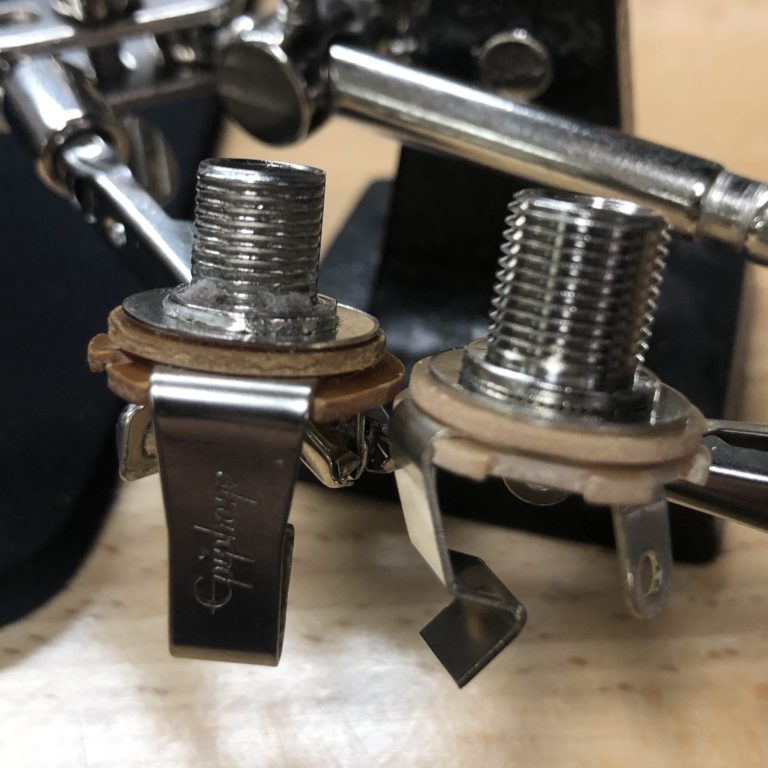
Rather than to simply reinstall the mis-fit original, we elected to replace the jack with a different, more suitable, style.
The thread portion of the Epiphone jack has an outside diameter of about 8.7mm. The Switchcraft jack, pictured at right, has an outside diameter of about 9.4mm which will help occupy the extra space in the mounting hole.
The new jack also has a longer threaded bushing that will allow for the addition of a lock washer to be placed between the jack and the underside of the guitar top. The lock washer will further limit the jack’s ability to move, keeping the threaded nut snuggly secured.
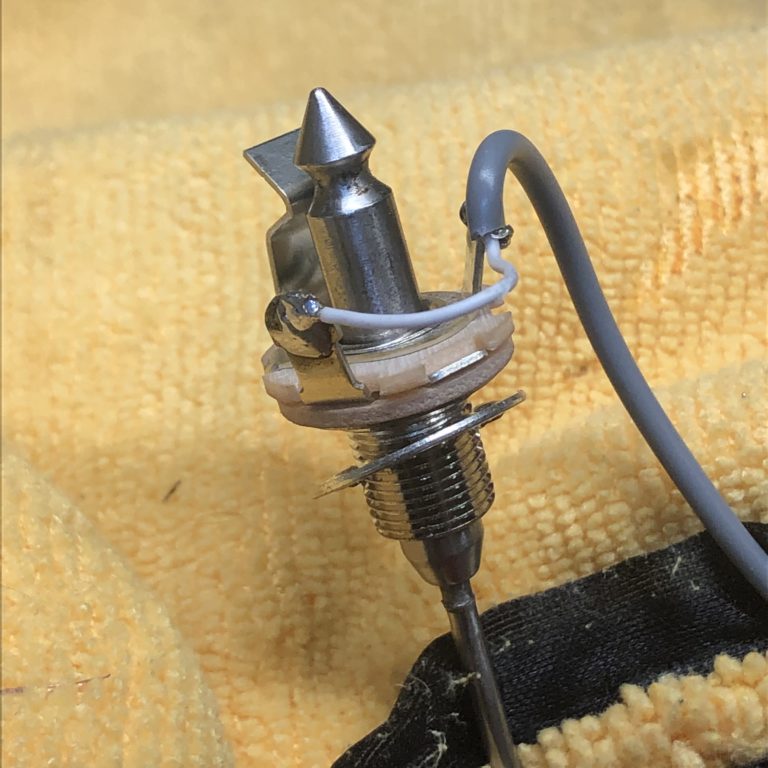
Once the wires have been soldered to their terminals, we slide the lock washer over the threaded bushing before inserting our mounting tool and feeding the jack through the body and into position.
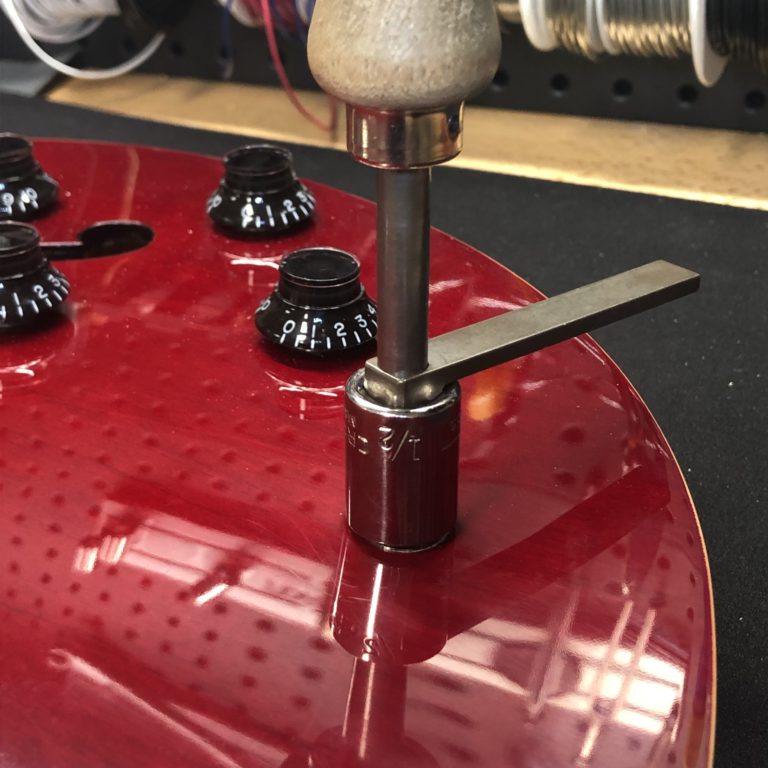
With the jack in place, we secure it from the top with a nut and washer. The tool pictured is designed for the soul purpose of supporting the jack internally while the nut is tightened from the outside; If the nut were tightened without supporting the jack, the whole jack would spin with it, potentially breaking the attached wires.
We frequently see instruments that come into the shop with the wires broken off of the jack due to the player’s attempts to hand tighten the nut. To prevent this, we do not recommend tightening a loose output jack nut without a means of holding the jack secure.
With the new replacement jack installed, this instrument is ready for a setup before heading home.
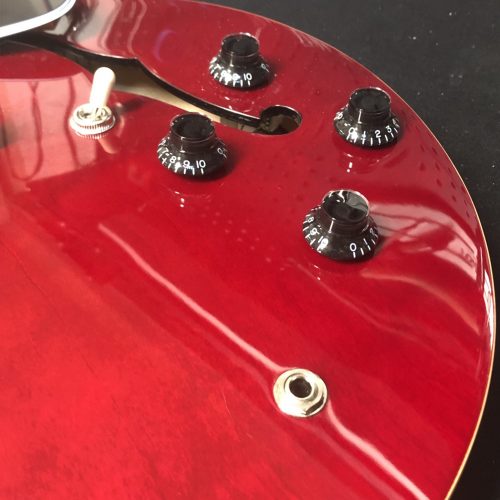
Where To Purchase Items Discussed In This Article

Erik Salomon - Calico Guitarworks Owner / Head Technician
Tech Talk articles are part of an ongoing effort to provide clear and detailed answers to common questions about guitar maintenance, modifications, and repairs.
While not intended as a step-by-step guide to servicing your own instrument, we hope that you will find value in the information provided.

Great Repairs Start With The Right Parts
Many of the parts mentioned in our blogs are available for purchase at:
GuitarRepairParts.com
Enter the code "TechTalk10" at checkout for 10% off your first order.
About Calico Guitarworks
Calico Guitarworks is the area’s premier destination for fretted musical instrument care and maintenance. Owned and managed by Erik Salomon, the shop is dedicated to providing quick, honest and reliable service. The staff at Calico Guitarworks has a combined 25+ years of professional guitar repair experience. Sharing the knowledge that we accumulate in this focused pursuit is at the core of what we do. Learn more About Calico Guitarworks, explore our Frequently Asked Questions, or Contact us with a specific request.



